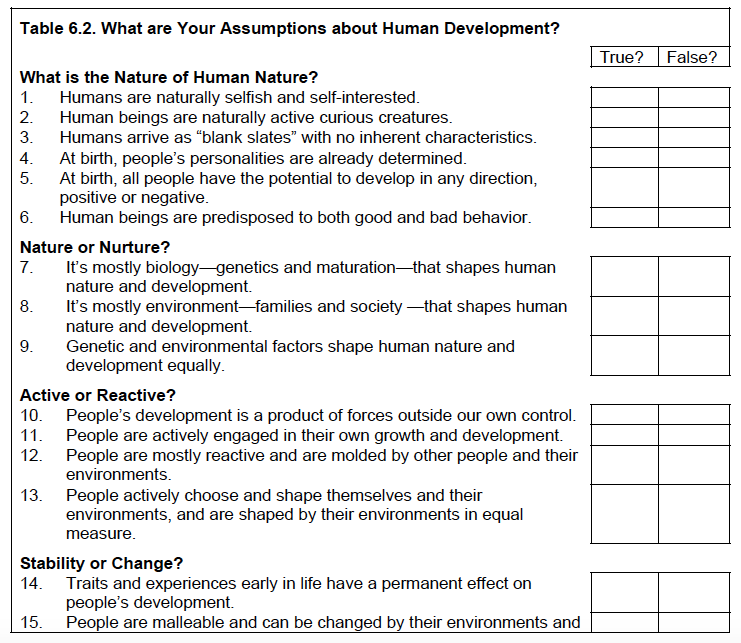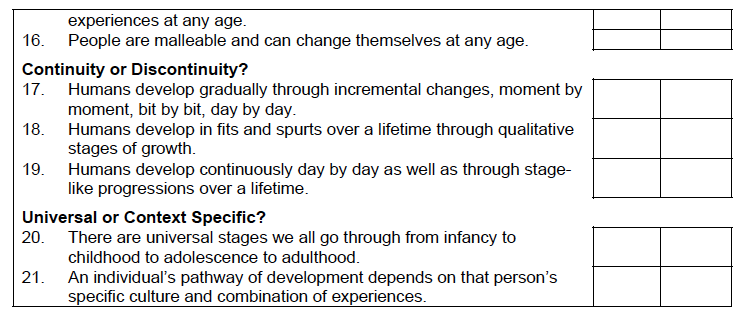17.6: Assumptions About Explanation
- Last updated
-
-
Save as PDF
What are assumptions about the role of the person in development?
The causal role of the person in development generally involve two points that follow from a view of the person as “reactive” versus “active” in their own development. A “reactive” model assumes that stability is the natural state of affairs, and that development is something that primarily happens to people— based on their genetic or environmental programming, and it is these factors, external to the self, that instigate change, which people receive passively. This can be taken to imply that genetics, traits, characteristics, and experiences early in life can have permanent irreversible effects. In contrast, an “active” model assumes that the essence of substance is activity, so that is the natural state of affairs is continuous transition or change. From this perspective, development is something that people participate in directly as active agents, choosing and shaping their own development. This can also be taken to imply that people should be malleable and remain open to change throughout life.
What are assumptions about the role of the environment in development?
These assumptions involve the causal role of the environment, specifying what is “on the arrows” from the environment to development of the target. The role of the environment can be one of “background” in which it operates only to provide fuel that will spur development from the inside (for example, by providing nutrition for consumption and digestion, leading to growth). A more active role for the environment is one in which it supports intrinsic motivations and growh tendencies by providing developmental affordances, that is, by essentially “handing the organism” what it intrinsically needs for the next steps in its development. Even more active are environments that support intrinsic motivations but also introduce their own socialization agenda through processes such as attunement and apprenticeship. Most active are environments that are assumed to be “running the show,” in that they are seen as external forces that actively instigate, motivate, and shape growth from the outside.
What are assumptions about the underlying hypothesized cause of development?
Most people have heard of these assumptions—these are the ones that introduce our favorite dichotomies—nature versus nurture, heredity versus environment, genes versus experience, maturation versus learning, biology versus society, preformed versus epigenetic, innate versus acquired, nativist versus empiricist, and so on. Some meta-theories emphasize one over the other of these poles, and some are more towards the middle—that is, they insist on “and” formulations which emphasize the importance of both organism and environment. If you are interested in reflecting a bit about your own assumptions, we have included a set of questions in Table 6.2 about the nature of humans and their development. You can use your answers to these questions to see which way you are leaning on these issues.






